- Home
- Alistair Moffat
Britain’s Last Frontier
Britain’s Last Frontier Read online
Britain’s Last Frontier
This eBook edition published in 2012 by
Birlinn Limited
West Newington House
Newington Road
Edinburgh
EH9 1QS
www.birlinn.co.uk
First published in 2012 by Birlinn Limited
Copyright © Alistair Moffat 2012
Introduction copyright © James Naughtie 2012
The moral right of Alistair Moffat to be identified as the author of this work has been asserted by him in accordance with the Copyright, Designs and Patents Act 1988
All rights reserved. No part of this publication may be reproduced, stored or transmitted in any form without the express written permission of the publisher.
eBook ISBN: 978 0 85790 228 3
ISBN: 978 1 84158 829 2
British Library Cataloguing-in-Publication Data
A catalogue record for this book is available from the British Library
For Kate, Sam, Holly, Chloe, Stephen, Charlotte, Tim, Louise, Will and all the Moffateers. You were all much on my mind as I wrote this book.
Contents
List of Illustrations
Map
Acknowledgements
Introduction: A View from the North-east Lowlands
Author’s Preface
1 Roads to Culloden
2 Land of Mountain and Flood
3 Moray
4 The Fire of the Dram
5 The Battle of the Graupian Mountain
6 The History of the Sun
7 Swordland
8 The Furrowed Field
9 The Auld Lichts, Peter and Wendy
10 The First Frontier
11 The Hill of Faith
12 The Wild West
13 Part Seen, Part Imagined
14 The City of the Gael
Select Bibliography
Index
List of Illustrations
The Pass of Leny
Ben Ledi
The Cairngorms near Grantown-on-Spey
The Battle of Culloden memorial cairn
Fort George
The Sculptor’s Cave, Covesea
Pictish carved stone at Hilton of Cadboll
Burghead
The distillery at Glenlivet
Bennachie
Tank traps on the Cowie Stop Line
Stonehaven
The countryside around Arbuthnott
Ploughing near one of the North-east fermtouns
The J.M. Barrie memorial, Kirriemuir
J.M. Barrie
Schiehallion
Dunkeld Cathedral
The site of the Roman fort at Inchtuthil
The Stone of Destiny
Dunadd
Lower North Inch, Perth
A birlinn
Loch Katrine
James Macpherson
Rob Roy Viewpoint, Loch Lomond
Balmoral Castle
The crew of the Vital Spark
Colonel Alistair MacDonell
The Pass of Leny, where the boggy Lowland flatlands give way to the mountains beyond (© Jim Henderson)
Ben Ledi – the beginning of the Highlands (© Jim Henderson)
Where the mountains rise from the plain: the Cairngorms near Grantown-on-Spey (© Jim Henderson)
The Battle of Culloden memorial cairn, which marks the site of the final confrontation of the Jacobite Rising of 1745 (© Jim Henderson)
Fort George, built in the aftermath of the 1745 Jacobite Rising (© Jim Henderson)
The Sculptor’s Cave, Covesea, the scene of extraordinary prehistoric rituals (© Jim Henderson)
One of the most beautiful of all Pictish carved stones is found at Hilton of Cadboll (Historic Scotland. Licensor www.scran.ac.uk)
Burghead, the site of a key Pictish fortress known as ‘the Bull Fort’ (© Jim Henderson)
On his state visit to Scotland in 1822, George IV refused to drink any other whisky other than that produced at Glenlivet (© Jim Henderson)
Bennachie, where the Caledonian kings gathered their armies to face the Romans in AD 83 (© Jim Henderson)
Tank traps on the Cowie Stop Line, thought to be the most complete of any of the stop lines built in the early years of the Second World War (© Jim Henderson)
Stonehaven, which was expected to see intensive street-fighting in the event of a Nazi invasion (© Jim Henderson)
The countryside around Arbuthnott, where Lewis Grassic Gibbon was brought up (© Jim Henderson)
Ploughing was one of the main activities for horses in the North-east fermtouns
The J.M. Barrie memorial, Kirriemuir (© Jim Henderson)
J.M. Barrie, whose Auld Lichts Idylls is a brilliant satire on the mores of small-town life (© National Trust for Scotland. Licensor www.scran.ac.uk)
Schiehallion, the ‘magic mountain of the Caledonians’ (© Jim Henderson)
Dunkeld Cathedral, which still displays damage caused by musket-balls during the siege of 1689 (© Jim Henderson)
The site of the Roman fort at Inchtuthil, Perthshire (© Jim Henderson)
The Stone of Destiny featured in the coronations of the kings of Alba. Removed to Westminster Abbey by Edward I, it was (officially) returned to Scotland in 1996 (© Historic Scotland. Licensor www.scran.ac.uk)
Dunadd, where the kings of Dalriada were inaugurated (© Jim Henderson)
Lower North Inch, Perth, where Clan Chattan and Cameron warriors fought to the death in 1396 (© Jim Henderson)
Birlinns – small, highly manoeuvrable warships – were the key to control of the Isles and North-west Scotland
Loch Katrine, made famous as a tourist destination after Sir Walter Scott published The Lady of the Lake in 1810 (© Jim Henderson)
James Macpherson, ‘translator’ of Ossian and described by Dr Johnson as a ‘mountebank, a liar and a fraud’ (Licensor www.scran.ac.uk)
Rob Roy Viewpoint, Loch Lomond, where the Highlands and Lowlands meet (© Jim Henderson)
Balmoral Castle, where Queen Victoria spent increasingly long periods after the death of Prince Albert (© Jim Henderson)
The crew of the Vital Spark sailed over geological and cultural frontiers every time they made their regular trip from Broomielaw up the Argyll coast (The Scotsman Publications Ltd. Liceonsor www.scran.ac.uk)
Colonel Alistair MacDonell, looking every inch the Highland chief, and who ruthlessly evicted the clansmen and their families from Glengarry. Painting by Sir Henry Raeburn. (© National Galleries of Scotland. Licensor www.scran.ac.uk)
Acknowledgements
Writing in the early morning, filling pages with scribbled longhand in a pool of angle-poise light, focusing closely on the unspooling of an idea or a narrative, those quiet hours are the best of it. What sets apart the writing of a book from all of the other things I do is that it is a solitary activity, something that is entirely my responsibility and, for the period of its writing, something under my sole control. And I like that, wish I could do more not less, and when it has gone well, there is no satisfaction better than that experienced at the end of a good day at my desk. For once, an evening glass of something seems deserved.
But after I change, edit, score through and finally type up my pages of scrawl, the work of other people begins. My agent, David Godwin, is simply the best, not only one of the calmest, most civilized and cheery of men but also now the author of his own book, a beautifully written little gem on the travails of handicap golf. Now we are all sure he feels our pain.
Jan Rutherford of Birlinn made this book happen and it would not have been published without her. Jan’s good sense, warmth and boundless patience have been invaluable. Her colleague, the excellent Andrew Simmons,
is the complete professional as he steers manuscripts deftly through the process of production. Nothing is ever a problem to Andrew and it is a pleasure to work with him. And my old friend, Jim Naughtie, surely the busiest man on earth, has done me proud and found time to write a superb introduction to this journey. Thanks, Jim.
And finally to the Moffateers – Kate Andrews, Sam Fowles, Holly Patrick, Chloe Hill, Stephen Kelly, Charlotte Baker, Tim Foley, Will Lord, Lovely Louise and all the others, my deepest thanks for your support. While writing this, I took time out to run for Rector of the University of St Andrews, my alma mater. Calling themselves, the Moffateers, these sparkling young people were the core of my campaign team. It was a wonderful time – and we won! By a mile! Forty years after graduating from St Andrews and 36 years after being married there, Lindsay and I have a better reason than nostalgia to come back, and there are moments when it seems as though we never left.
I hope the completion of that journey has meant the enrichment of the one chronicled in this book.
Alistair Moffat
October 2012
Introduction:
A View from the North-east Lowlands
James Naughtie
IN SCOTLAND’S NORTH-EAST, where I was born and raised, the significance of what Alistair Moffat describes as Britain’s Last Frontier – the line that marks in both a physical and cultural sense the boundary between Highland and Lowland Scotland – is palpable. It is borderlands such as these, where different landscapes, languages and cultural attitudes collide, that really make us think about who we are.
In this book, Alistair takes us on a journey through place and time – from the Clyde valley to the North-east lowlands of Aberdeenshire, from the prehistoric peoples of the Moray Firth to J.M. Barrie, the creator of Peter Pan, to explore the histories and cultures on either side of the divide.
In my own home patch, the best place to start to grasp all this is not by the shores of the North Sea or on the farmland that has given the place its character. Much better to step beyond its boundaries and look in. Head for the hills. The walker who approaches the massif of the Cairngorms from the north-west, through the Rothiemurchus Forest, perhaps having come from a little further south through the deep folds of Glen Feshie, sees, opening up in the side of the mountains, a great cleft, where some mighty force has parted the rocks. The effect is surprising because the four mountains that create the plateau appear from almost every angle to be a solid mass, a great obstacle in the sky.
Their height is not the whole explanation because they are modest by the standards of Europe’s high ranges, displaying no spectacular towers of rock or jagged peaks and appearing unlikely to harbour deep gorges, although all that is an illusion. Their visual power comes from the obvious fact that they create a barrier that divides the landscape. No one coming from the north or the west can believe that what lies beyond is the same territory. The hills feel like an end, not a beginning.
They give notice that the high places, the geographical space that we know loosely as the Highlands, will soon be left behind. If there are traces on the other side, they will soon disappear. And, therefore, the V-shaped opening in the massif is enticing, as if it is a passage which will lead to secrets being revealed. The path that leads through it is known as the Lairig Ghru, one of the greatest mountain walks in our islands, and it fulfils its promise because, in the course of only about 25 miles, the crossing is made from Highlands to Lowlands. The Lairig Ghru rises to a modest but often intimidating height of about 835 metres (2740 ft) above sea level. Up there, a subarctic cold can grip you without warning and an icy, unforgiving wind sometimes forces even the sturdiest travellers to take shelter for the night. But it is here that you can observe the sudden drama of our most northerly frontier and its power.
The Lairig Ghru is a walk rather than a climb but a rough one. There are boulder fields and bleak channels where a vicious wind can swirl in without warning and scree slopes where a drenching mist can drop down in a few minutes. You pass the Tailors’ Stone which, legend says, marks the grave of a band of tailors who were said to have promised to dance at both ends of the Lairig Ghru in the course of one Hogmanay night. They perished on the journey, even that great stone having failed to given them enough shelter in the storm. A little further on is the rough bothy at Corrour where walkers can bed down safely for the night and the source of the River Dee that flows all the way east to Aberdeen. The walk, which people are told to attempt in one day only in the summer months when wild weather is intermittent rather than the norm, is a kind of challenge. The knowledge that cattlemen were still using the pass as a drove road in the second half of the nineteenth century, walking their beasts to market by the shortest route to the south, is not much comfort these days. It is tough. So, coming from the north-west, you sense a promise that the hard slog will be worth it in the end and that the rough places will pass away. And so it proves. Descending towards the rich pastures of Aberdeenshire, with only Byron’s ‘steep frowning glories of dark Lochnagar’ to remind you of the mountains, the Highlands are behind you.
The countryside that stretches east along the Dee and northwards to the Moray Firth coast about fifty miles away is flatter, more intimate, and the voices are different. They speak of a distinct piece of territory that, for all its contrasts – fishermen and farmers have always gone their separate ways – is a sheltered part of Scotland, surrounded by mountains and sea, that has a confident sense of itself.
Growing up in the North-east was to understand instinctively that there was a dividing line – geological, linguistic, cultural – that was a natural part of our firmament. It is represented by those mountains in the Cairngorm plateau, the northernmost spur of the Grampians, and by the history that has made the frontier between Lowlands and Highlands such an obvious fact of life. The North-east has always seemed the far north from a Glasgow or Edinburgh perspective but its people think the Highlands are just as far away. They are themselves and the reason is that they are aware of the boundary.
When Johnson and Boswell were heading for the Western Isles in 1773, they had a mixed time of it in the North-east. They found little to interest them outside Aberdeen. They found Banff especially unappealing and, in Cullen, Johnson ordered a dried haddock to be removed from his table. Boswell makes clear that, after they left Aberdeen, where they had been very comfortable, they wanted to get on the road west as quickly as they could. They travelled round the coast and cut in to Elgin, only to find an inedible meal set before them. Never mind, Johnson was still interested in the spare ruins of the cathedral whose fate, typically, he interpreted as ‘another proof of the waste of reformation’, noting that it had first been desecrated by a Highland chief ‘in the intestine tumults of the barbarous ages’.
Boswell noted in his journal that they had travelled about twenty miles westwards from Elgin to Nairn, having indulged their imaginations with pleasant thoughts of Macbeth’s witches along the way at Cawdor and Auldearn, when they first smelt peat fires and heard Gaelic spoken (Boswell referring to it as ‘Erse’, its Irish counterpart). They knew then that they were in the Highlands.
That translation, away from the lowlands to somewhere different, would still be evident to anyone born in the North-east two hundred years after that journey. Growing up in Banffshire – administratively abolished in 1975 but alive in the minds of everyone who knew it as home – was to understand the difference between east and west. Towards Aberdeen there was a familiar landscape, on which the small family farms of the higher, rougher ground gave way to the bigger, richer, pastures of the plain of Buchan. As surely as the cattle were taken to market in Aberdeen or the slaughtered meat, like the whisky, was loaded on the trains that took it south the centre of gravity was in the east. The voices were the same and the music of life in village and farm was familiar. Rough though life had been for generations on some of the inhospitable land and at sea in search of the herring, the place had a harmony of its own – it demanded to be treated as a disti
nct territory, different from anywhere else.
That feeling was encouraged by the fact that, when you turned west, things started to change. In my childhood, I was aware that somewhere on the way to Elgin voices began to alter. A Highland softness would modify the broad vowels of Banffshire and Aberdeenshire and the cadences would shift upwards. By the time you were beyond Elgin . . . well, you were on the way to Inverness, where people wore the kilt in the street, churches still held services in Gaelic and the rhythms of life took on a Highland pace. My home village was almost equidistant from Aberdeen and Inverness, roughly fifty miles each way, and they were worlds apart.
The cultural distinctions that became a part of our lives are testimony to the persistence of that great divide, without which the North-east, in particular, makes no sense. Its ability to hold on to a kind of territorial identity that has proved surprisingly robust in the face of the ravages of recent times (some of them well-meant and some of them beneficial) is remarkable evidence of a clear-headed set of distinctions that have lingered in the collective mind. They had the force of a divide.
My village was Rothiemay on the banks of the River Deveron, which runs for about 60 miles from the Cabrach moors near Dufftown to the sea at Banff. The river has often been considered a poor relation to the swanky Spey, which is the faster and the broader of the two, but locals will point out that the British record for a salmon caught on the fly (61 lbs) was on the Deveron. For much of its course, it defined the old boundary between Banffshire and Aberdeenshire and therefore meandered through some of the best farming territory in the North-east. I used to know many of its banks and stones so well that I believe that now, several decades later, I could find my way across it in a dozen places without a guide. The river was a place of excitement and calm and a journey along its course – I remember once a daft expedition on a ramshackle raft that had been built without consideration for the rough patches of white water that would pull it apart – is an introduction to the countryside of the North-east, so resonant for anyone who knows it and so particular.

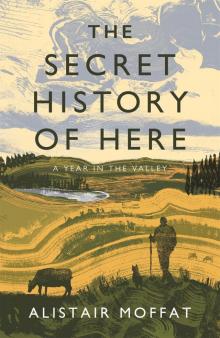 The Secret History of Here
The Secret History of Here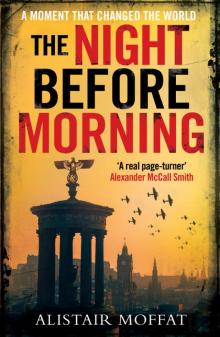 The Night Before Morning
The Night Before Morning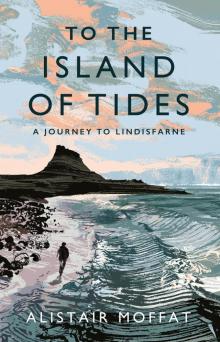 To the Island of Tides
To the Island of Tides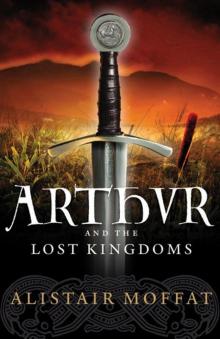 Arthur and the Lost Kingdoms
Arthur and the Lost Kingdoms Britain’s Last Frontier
Britain’s Last Frontier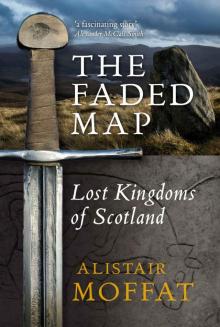 The Faded Map: The Lost Kingdoms of Scotland
The Faded Map: The Lost Kingdoms of Scotland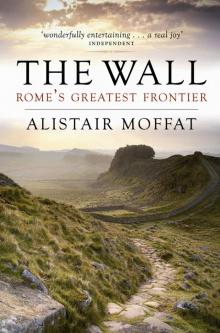 The Wall
The Wall